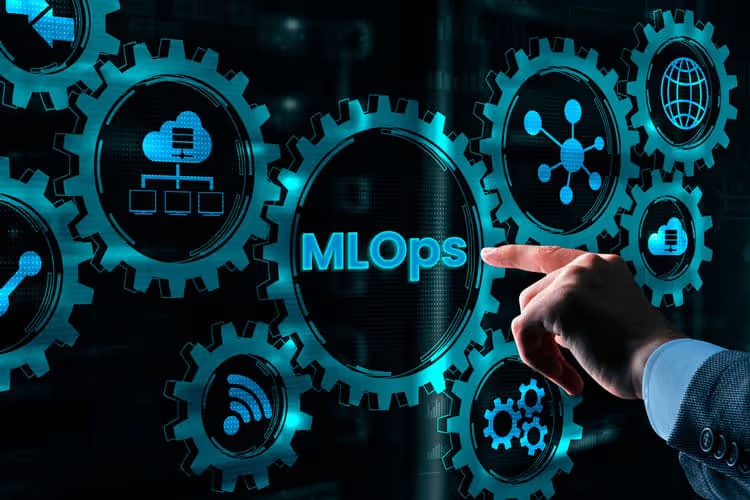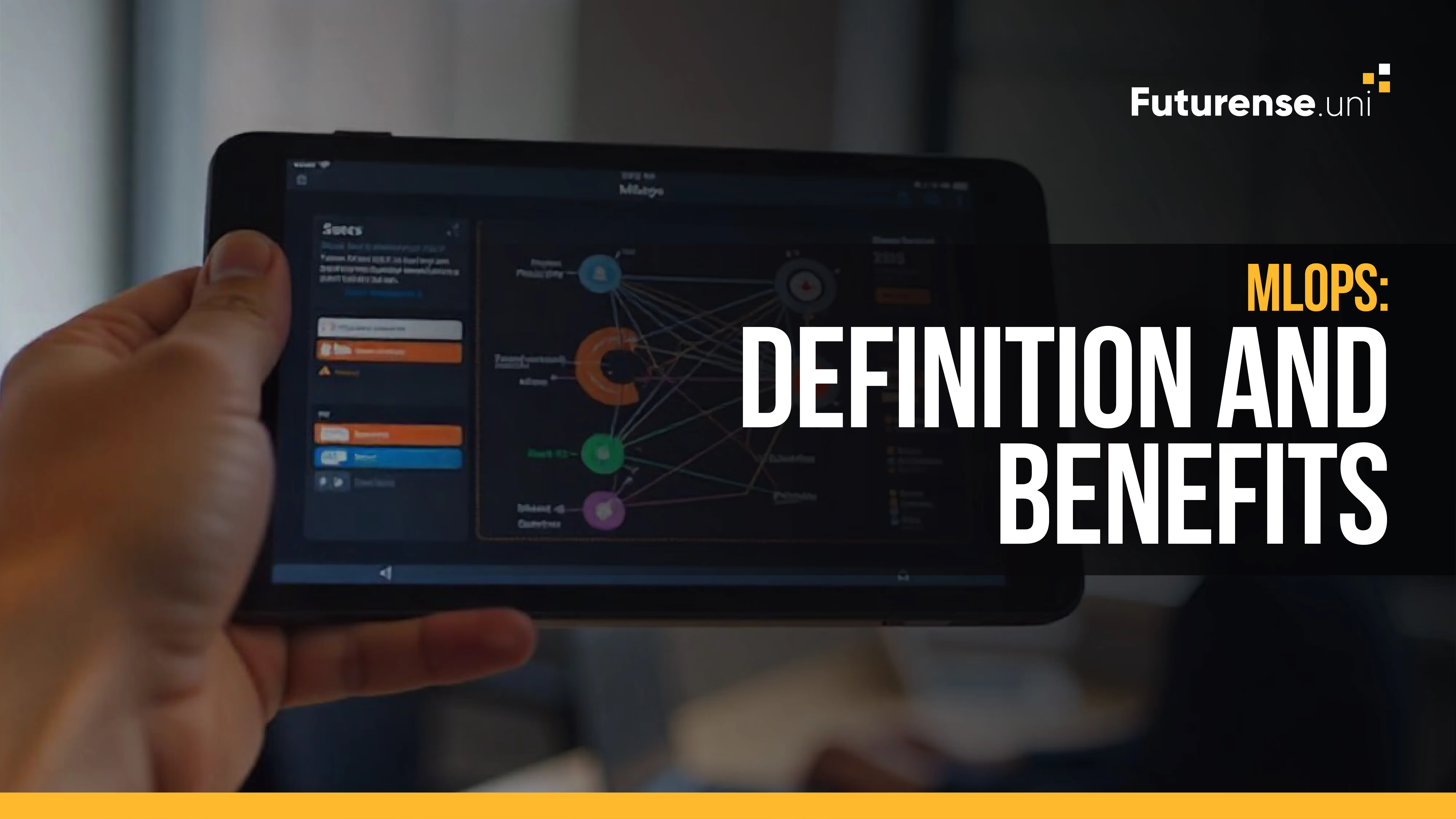Did you know that nearly 87% of machine learning models never reach production? For data scientists and ML engineers, turning a high-performing prototype into a scalable, real-world solution remains a major hurdle. Managing model versioning, maintaining robust data pipelines, and ensuring real-time performance monitoring can make the ML lifecycle feel like a complex puzzle. In this guide, we’ll break down the Top 10 MLOps Tools in 2025 that simplify workflows, automate deployments, and help you bridge the gap between experimentation and impact. These tools are designed to transform how you operationalize machine learning and unlock the full potential of your AI projects.
What is MLOps? A Complete Guide to the Top 10 MLOps Tools in 2026
MLOps (Machine Learning Operations) combines software engineering practices with machine learning to automate and standardize the end-to-end ML lifecycle. From feature engineering and model training to model deployment and monitoring, MLOps tools ensure reproducibility, scalability, and collaboration across teams. According to Gartner, organizations adopting MLOps see a 40% reduction in time-to-market for AI solutions.

The Top 10 MLOps Tools
1. MLflow
Best For: Experiment Tracking & Model Versioning
Developed by Databricks, MLflow is an open-source platform that simplifies managing the machine learning lifecycle. Its modular design supports:
Experiment tracking (logging parameters, metrics, and artifacts).
Model versioning and registry for seamless collaboration.
Project packaging to reproduce runs across environments.
Why It Stands Out:
MLflow integrates with popular frameworks like TensorFlow and PyTorch, making it ideal for teams needing flexibility. Plus, its REST API enables easy integration into existing data pipelines.
Use Case: A healthcare startup uses MLflow to track 100+ hyperparameter combinations for a diagnostic model, reducing training time by 30%.
2. Kubeflow
Best For: Workflow Orchestration on Kubernetes
Kubeflow is the go-to MLOps platform for Kubernetes enthusiasts. It provides:
End-to-end pipelines for data preprocessing, training, and deployment.
Scalable model training using TFJob or PyTorchOperator.
Multi-cloud compatibility (AWS, GCP, Azure).
Why It Stands Out:
Kubeflow’s emphasis on portability makes it perfect for enterprises managing hybrid cloud environments.
3. Databricks
Best For: Unified Analytics & Collaboration
Databricks’ AI Platform unifies data engineering, analytics, and ML. Key features include:
AutoML for accelerated model development.
Delta Lake for reliable data pipelines.
MLflow integration for experiment tracking.
Why It Stands Out:
Databricks simplifies collaboration between data scientists and engineers, with shared notebooks and real-time dashboards.
Stat: Companies using Databricks report a 25% faster model deployment cycle (Forrester).
4. TFX (TensorFlow Extended)
Best For: Production-Grade Pipelines
Google’s TFX is a robust framework for deploying TensorFlow models at scale:
Feature engineering with TFT (TensorFlow Transform).
Model validation with TensorFlow Data Validation.
Serving via TensorFlow Serving or Kubernetes.
Why It Stands Out:
TFX excels in real-time scenarios, like recommendation engines processing 1M+ requests per second.
5. Amazon SageMaker
Best For: End-to-End Managed Service
AWS’s SageMaker is a fully managed MLOps platform offering:
Built-in algorithms for quick model training.
AutoPilot for automated feature engineering.
Model Monitor for detecting data drift.
Why It Stands Out:
SageMaker’s pay-as-you-go pricing suits startups, while its security features appeal to enterprises.
Case Study: Airbnb uses SageMaker to deploy models 50% faster, optimizing dynamic pricing.
6. H2O.ai
Best For: AutoML & Explainability
H2O.ai democratizes ML with:
Driverless AI for automatic feature engineering.
Model interpretability tools (SHAP, LIME).
MOJO scoring for low-latency deployment.
Why It Stands Out:
H2O’s focus on transparency makes it a favorite in regulated industries like finance.
7. Azure Machine Learning
Best For: Enterprise-Grade Governance
Microsoft’s Azure ML provides:
Drag-and-drop designer for no-code workflows.
Responsible AI dashboards for fairness assessments.
MLOps templates for CI/CD pipelines.
Why It Stands Out:
Seamless integration with Power BI and Azure DevOps streamlines enterprise workflows.
8. Neptune.ai
Best For: Experiment Management
Neptune.ai specializes in:
Metadata storage for models, datasets, and metrics.
Collaboration with team dashboards.
Integrations with PyTorch Lightning, Hugging Face.
Why It Stands Out:
Its user-friendly UI helps remote teams stay aligned on experiments.
9. Alteryx
Best For: Data Prep & Feature Engineering
Alteryx accelerates data pipelines with:
Visual workflows for ETL/ELT processes.
Auto Insights for automated feature discovery.
ModelOps for deploying analytics apps.
Why It Stands Out:
Its low-code approach bridges the gap between data engineers and scientists.
10. Domino Data Lab
Best For: Reproducibility at Scale
Domino’s Enterprise MLOps Platform offers:
Environment management for consistent model training.
Compute Grid for distributed workloads.
Model monitoring with integrated dashboards.
Why It Stands Out:
Domino’s governance tools are unmatched for industries like pharma, where audit trails are critical.
How to Choose the Right MLOps Tool
Consider these factors:
- Team Size: Startups may prefer SageMaker’s managed service, while enterprises need Kubeflow’s flexibility.
- Tech Stack: TFX suits TensorFlow users; MLflow is framework-agnostic.
- Budget: Open-source tools (MLflow, Kubeflow) vs. paid platforms (Databricks, SageMaker).
- Compliance Needs: Domino or Azure ML for strict governance.
Note: Start with a pilot project to evaluate tools against your workflow.
Comparison Table: Top MLOps Tools at a Glance
Final Thoughts
Top 10 MLOps Tools in 2026 can make the difference between a machine learning model that sits idle and one that delivers measurable ROI. Whether your focus is on model versioning, real-time monitoring, or orchestrating complex workflows, these tools support every phase of the ML lifecycle. Start small, iterate quickly, and boost the odds of moving your ML projects smoothly from prototype to production.
FAQ: MLOps Tools
Common tools include MLflow (experiment tracking, model registry), Kubeflow (pipeline orchestration), DVC (Data Version Control) (versioning data and models), TensorFlow Extended (TFX), Airflow, Weights & Biases, Seldon, BentoML, and Prefect.
How do MLOps tools differ from DevOps tools?
MLOps tools are specialized for model lifecycle tasks (experiment tracking, data versioning, model deployment, monitoring), whereas DevOps tools focus on software build, deployment, and infrastructure automation. MLOps must also handle data drift, model retraining, and reproducibility.
Why is data / model versioning important in MLOps?
Versioning ensures reproducibility, accountability, and traceability. It lets teams roll back to past versions of data, models, or pipelines and compare performance between iterations. Tools like DVC support versioning of datasets and ML artifacts.
Can I use open source MLOps tools or must I use paid platforms?
Yes — many robust open source MLOps tools exist and are widely used (e.g. MLflow, Kubeflow, DVC). Paid or managed platforms (e.g. AWS SageMaker, Google Vertex AI) build on or integrate these open source tools to offer convenience, support, and scalability.
What challenges do MLOps tools face / what are their limitations?
Some challenges include: tool fragmentation, steep learning curve, compatibility issues across stages of the ML lifecycle, lack of full automation, and resource overhead.








.avif)
.avif)